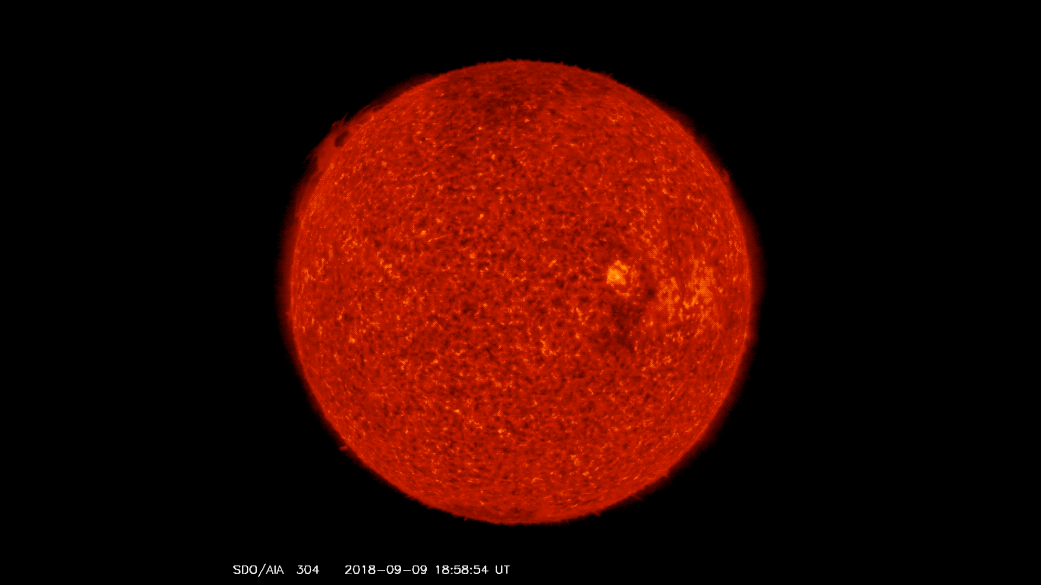On Sept. 9, 2018, NASA’s Solar Dynamics Observatory, SDO, saw two lunar transits as the Moon passed in front of the Sun. A transit happens when a celestial body passes between a larger body and an observer. This first lunar transit lasted one hour, from 4:30 pm to 5:30 p.m. EDT and obscured 92 percent of the Sun at the peak of its journey. The second transit happened several hours later at 9:52 p.m. and lasted a total of 49 minutes, ending at 10:41 p.m. EDT. This transit only obscured 34 percent of the Sun at its peak.
Watch the movie here to see how — from SDO’s perspective — the Moon appears to go in one direction and then switch direction to cross the Moon again. The Moon does not, of course, actually change direction, but it appears to do so from SDO’s perspective based on the fact that the spacecraft’s orbit essentially catches up and passes the Moon during the first transit.
Because the Moon does not have an atmosphere, when a lunar transit occurs no light from the Sun gets distorted, allowing for a distinct view of the Moon’s surface. Although it looks smooth from far away, the surface of the Moon is rugged, sprinkled with craters, valleys and mountains.
SDO captured these images in a wavelength of extreme ultraviolet light that shows solar material heated to more than 10 million degrees Fahrenheit. Extreme ultraviolet light is typically invisible to the human eye, but satellites like SDO allow us to observe the swirling movement in the Sun’s atmosphere visible only in these wavelengths.
By Susie Darling
NASA Headquarters, Washington, D.C.



























